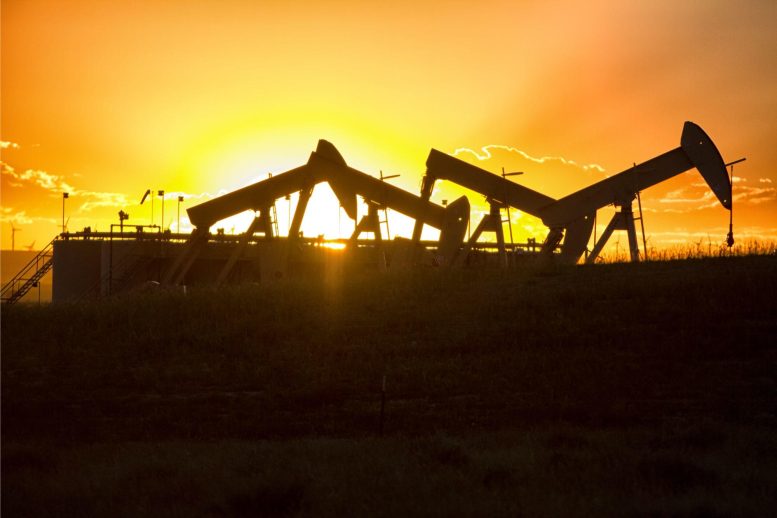
New research indicates that fracking, even with liquid carbon dioxide, causes small tremors that were previously not clearly attributed to the process. While CO2 fracking can sequester carbon, benefiting the environment, both CO2 and water-based fracking can lead to these tremors, with the potential for larger damaging earthquakes.
New research has confirmed that fracking is responsible for the previously unexplained slow, small earthquakes or tremors. The tremors are produced by the same processes that could create large, damaging earthquakes.
Fracking involves the forceful injection of fluids below the Earth’s surface to retrieve oil and natural gas. While it is commonly executed using wastewater, this particular investigation looked at the outcomes when liquid carbon dioxide is used. This method drives carbon deep into the ground, preventing it from contributing to atmospheric heat retention.
By some estimates, carbon dioxide fracking could save as much carbon annually as one billion solar panels. It is much more advantageous for the environment to frack with liquid CO2 than with wastewater, which does not keep carbon out of the atmosphere.
“Because this study examines a process that sequesters carbon underground, there may be positive implications for sustainability, and for climate science,” said Abhijit Ghosh, associate professor of geophysics at UC Riverside and co-author of the study in the journal Science.
Because the carbon dioxide is liquid, however, Ghosh said the results of this study almost certainly apply to fracking with water. Both are likely to cause tremors.
On a seismograph, regular earthquakes and tremors appear differently. Big quakes cause sharp jolts with high amplitude pulses. Tremors are more gentle, rising up slowly above the background noise with much less amplitude, and then slowly decreasing.
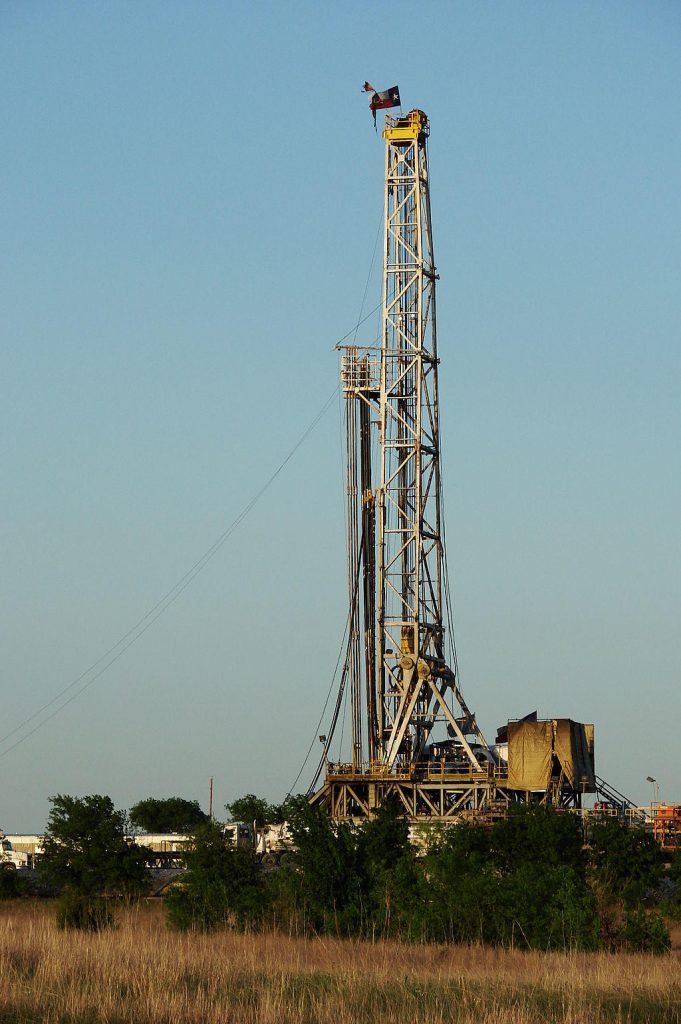
Shale gas drilling (fracking) rig near Alvarado, Texas. Credit: Loadmaster (David R. Tribble)
“We are pleased that we are now able to use these tremors to track the movement of fluids from fracking and monitor the movement of faults resulting from the fluid injections,” Ghosh said.
Previously, there was debate amongst seismologists about the source of the tremors. While some papers argued the tremor signals were from large earthquakes happening thousands of miles away, others thought they could have been noise generated by human activity, like the movement of trains or industrial machinery.
“Seismometers are not smart. You could drive a truck nearby, or kick one with your foot, and it would record that vibration,” Ghosh said. “That’s why for some time we didn’t know for sure if the signals were related to the fluid injections.”
To determine their origin, the researchers used seismometers installed around a fracking site in Wellington, Kansas. The data covered the entire fracking injection period of six months, as well as a month prior to the injections and a month following them.
After discarding the background noise, the team showed that the remaining signals were generated below ground and only appeared while the fluid injections were occurring. “We did not detect the tremors before or after the injections, which suggests the tremors are related to them,” Ghosh said.
It has been known for some time that fracking can produce larger earthquakes. To keep faults from slipping underground and producing them, or tremors, one option would be to stop fracking. As this is unlikely, Ghosh says it is important to monitor these activities to understand how rocks are being deformed by them and to track the movement of fluids after injection.
Modeling experiments can be and are performed to help companies determine fluid injection pressures that should not be exceeded. Staying within these limits helps ensure that the fluids will not migrate towards large faults underground, triggering damaging seismic activity. However, not all faults are mapped.
“We can only model this type of experiment when we know there is an existing fault. It is possible there are faults we do not know of, and in those cases, we cannot forecast what will happen,” Ghosh said.
Reference: “Tremor signals during fluid injection are generated by fault slip” by Shankho Niyogi, Abhijit Ghosh, Abhash Kumar and Richard W. Hammack, 3 August 2023, Science.
DOI: 10.1126/science.adh1331


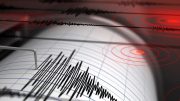

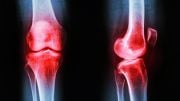
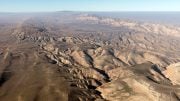
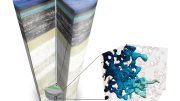


Its the constant taking from the earth period that is causing the problem shut it down for a couple of days every now and then it might make a difference.come on now they digging in places they .to get the diamonds out.taking the hard earth.to make and building all these fake hills.talking about saving the animals.for what they anit going have know where to go
This studies didn’t come from scientists. It’s one more speculation from people that want notoriety!
I started talking about this very thing as a theory of mine a few years ago and someone jumped all over me telling me how impossible it was. Thank you science!
What happened to the theory that small tremors and earthquakes could
quite Possibly abate severe earthquakes ?
Please note that fracking boreholes are generally very dificalt to cap due to the fracking operation of creating cracks.
But we are not drilling! Biden closed it down! Shutdown so to bankrupt the Country by Trillions!!🤨🇺🇸
Can anything non-bias come out of the UC system. Everyone (Professors and upper management are so far to the left it is rediculous. There is no concrete studies that suggest “fracking” can cause major earthquakes. It is pure conjecture on the part of the papers author’s to conclude that it does.
I am beyond skeptical about this “study.” I live less than 1/2 hour from Wellington. All of the oil in the area is at around 5,000 feet. As a result, that is the depth of the horizontal drilling and fracking. The earthquakes in the area are at 10,000 feet and below.
Rather than the fracking, it is the deep injection wells to dispose of fracking fluid. The used glued is injected to around 10,000 feet and deeper.